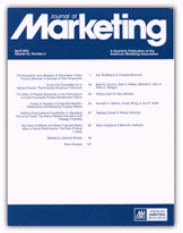
Nyilasy, G., Yi, S., Herhausen, D., Ludwig, S. and Dahl, DarrenW. (2025). Business-to-Investor Marketing: The Interplay of Costly and Costless Signals Journal of Marketing, 89(3):97--117.
-
Affiliated author
-
Publication year2025
-
JournalJournal of Marketing
Marketing to investors—especially when seeking funding for startups—is unique, with investors facing extreme uncertainty. This study uses foundational work in marketing, economics, management, finance, and psychology, as well as theories-in-use development with angel and venture capital investors, to build a business-to-investor marketing theory. The theory proposes that investors rely on marketing signals from startups, whether they are costly (financial, social, human, and intellectual resource endowments) or costless (verbal passion and concreteness). Results of a large quantitative field study of 5,334 written proposals from startups show that costly and costless signals have interactive effects on investor acceptance. The natural entrepreneurial tendency to compensate for a lack of costly signals with the use of passionate language backfires, reducing investor acceptance. Only when costly signals are communicated does a greater use of passion increase investor acceptance. Further, written proposals should be moderately concrete when they lack costly signals and should be formulated abstractly when plenty of costly signals can be offered. These contingencies provide insights into costly–costless signal interdependence in business-to-investor marketing and suggest how startups can optimize their written proposals for investor acceptance.